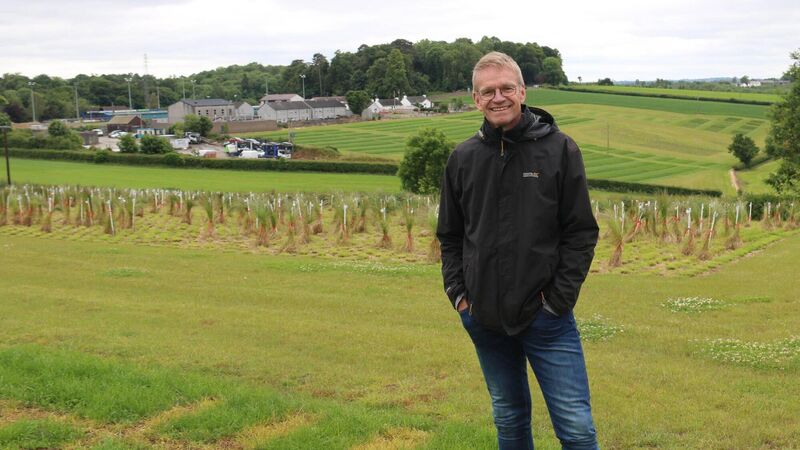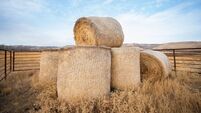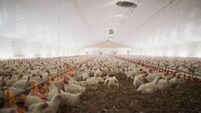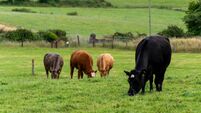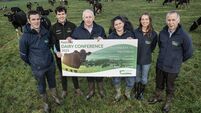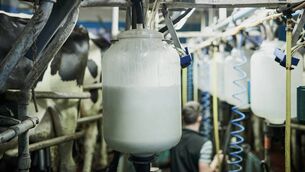The first gene-edited ryegrass varieties could be just 10 years away from launch in Europe, should it be given full approval, according to Piet Arts, Barenbrug’s global research director.
Speaking to the Irish Examiner, Mr Arts said he was hopeful gene-editing would get across the line soon.
“There are slow movements on the legal side, but it’s taking time,” he said.
“The European Parliament has accepted a proposal from the European Commission, but with many amendments, so those need to be discussed with the European Council of Ag Ministers and then it has to go back to the Parliament.
“But there were elections [last month] and things are changing and some of these amendments are not in line with other laws, like patent laws. So the European Parliament has accepted the gene-editing proposal, but with the amendment that gene-edited products cannot be patented.
But in the present patent laws, gene-edited product can be patented. Gene editing in ryegrass is not very easy, but if you were to ask me when is the first gene-edited ryegrass likely to hit the market, I’d say 10-15 years from now.
“There are many, many genes involved in a trait like drought tolerance for example. You can already edit 20 genes at the same time right now. It’s complicated, but it’s technically possible.
“It might speed it up in a way, but you still need to do your trials. Grass-breeding is still a long, time-consuming process. Especially whenever you consider this year compared to last year. You want a variety to perform in multiple environments and multiple seasons.”
Genomics 'will speed up breeding'
Barenbrug has already been using genomic evaluations for around 10 years — a process where DNA testing and artificial intelligence are used to identify genes associated with particular traits.
“Genomics is not new, but it will speed up breeding. Once you apply genomics, like you do to cow breeding, you can shorten the length of time radically,” he said.
“You don’t have to grow plants to see the traits; you can grow plantlets, sample the DNA and decide which to take forward. We’re almost there with it.”
The company is also carrying out trials involving drones and artificial intelligence.
“Yield is really hard to assess with drones, because that view is saturated very quickly. We have done many, many trials with drones but it’s not so easy,” he said.
“[We can identify] density and diseases, but yield is difficult and that’s the one big thing we’re after.”
Farmer-proof
Mr Arts warned that multispecies need to be “farmer proof”, and said that testing needed to better reflect the practicalities of growing swards on-farm.
“Clover is hard to manage; if you cut the grass too short, the clover will take over as it gets more light. If you keep it taller, then the clover will be out-competed. So it’s not only genetics that is important, but also management,” he said.
“The more complex your mixture, the more complex your management will become as well. It’s becoming more difficult for farmers too.
“It’s not only clover, but other species like chicory or plantain, often included in multispecies swards. That means that the management has to be in line with the composition of all of the plants. You have to be careful when to graze and when to cut.
“It’s much easier to grow ryegrass. So that requires a bit of change not just for plant breeders but for the farmers themselves.”
Despite the growing interest in multispecies, he believes ryegrass will still retain its place as the main grassland species in Ireland and the UK.
“Definitely in this part of the world,” he said. “In France, they have done some exercises looking at original populations of ryegrass and where they fit, and you don’t see that many changes, here they will still grow ryegrasses that are from this area.
“But if you are in France, and you want to keep growing ryegrasses over there, you’ll probably need to look at something from Greece.
If the nitrates derogation measures mean that you have to grow clover, we will test more with clover as well. If all plants are grown with clover and that becomes the standard, then it makes sense to incorporate clover into your trials.
“With clover, you want it to be there, but you don’t want it to be too aggressive. Yet official trials are run in monoculture. So if you want to register a white clover, it will be trialled in a monoculture system, so it has to yield, which is insane, because you don’t want this to yield or it will take over. You just want it to be there.
“You can only get a white clover registered if it yields — if it’s aggressive - but we don’t want it to be aggressive, we want it to be stable and ok and quiet and do its thing.
“Red clover is not persistent enough — it will disappear after a few years. As breeders, we need to find clovers that are easier to manage , but that’s not easy.”
Overcomplication
He also warned there was a danger in overcomplicating multispecies swards.
“Legumes are becoming more important, and the question is how complicated should they be? Should they include only legumes, plantain and chicory, or perhaps just legumes and perennial ryegrass?” he said.
“Some companies have very complicated mixtures, but you often won’t find much of it back because it adds competition. It’s hard enough to have clover and grass together.
Biodiversity is a magic word, but if you can grow clover and ryegrass in a good way together that’s already a winner — if you can keep it stable for a number of year then you are already making a huge gain because it can take over if you don’t manage it properly.”
In terms of further threats, Mr Arts said his attention is firmly fixed on rust.
“It’s not such a big issue here at the moment, but we just heard today that rust is moving north in England.
“If the climate is getting warmer, and we are going down in nitrogen fertilisation that will increase rust because rust attacks weak plants. Any disease will always be more prevalent in plants that are weaker.”
